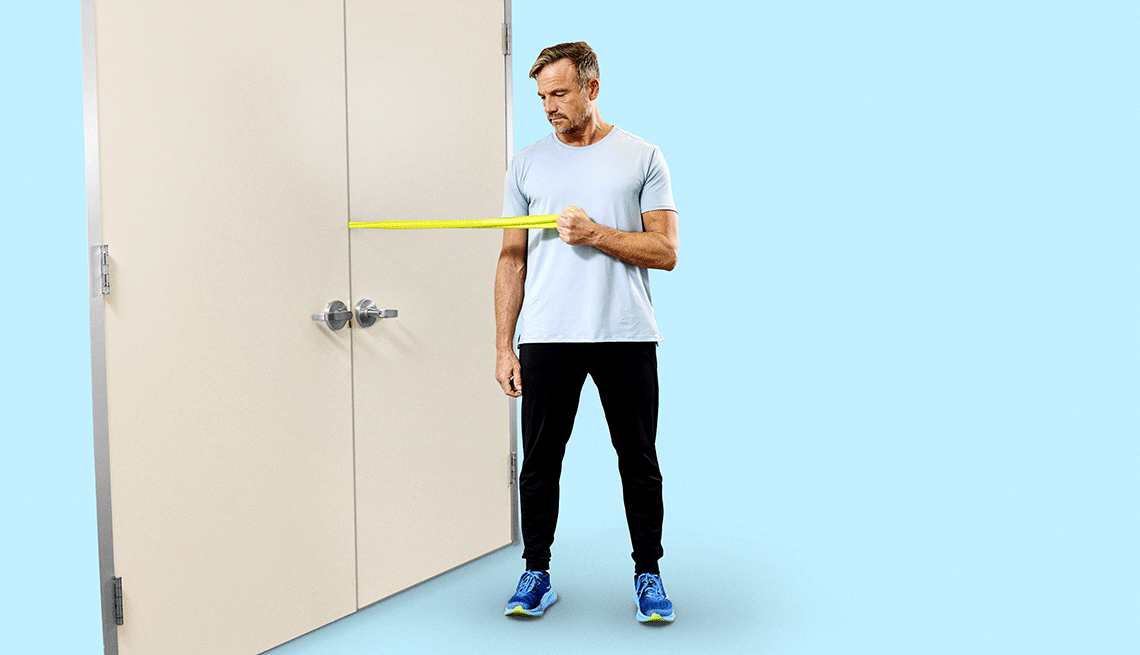
Want to strengthen your shoulder? Try this | members only
- Select a language for the TTS:
- UK English Female
- UK English Male
- US English Female
- US English Male
- Australian Female
- Australian Male
- Language selected: (auto detect) - EN
Play all audios:

Our shoulders are essential for almost every movement we make, from reaching items on high shelves to lifting groceries and getting dressed. Yet shoulder pain affects as many as 1 in 4
adults, research shows, and becomes more common with age. Some shoulder injuries happen dramatically, while others occur gradually from wear and tear over time. The shoulder, a complex
ball-and-socket joint, is the most mobile joint in the body, which means it also can be unstable, says Greg Hartley, a board-certified geriatric physical therapist and associate professor at
the University of Miami. The best way to protect your shoulders is to strengthen the muscles supporting them, Hartley says. #1 EXERCISE SERIES Do these to stay strong as you age A full
shoulder workout should target the three different muscle groups that surround the shoulder: the anterior, medial and posterior deltoids. However, if you have time for only one exercise,
you’ll get the most bang for your buck by performing shoulder rotations. Also known as rotator cuff strengtheners, these exercises target the small but crucial muscles of the rotator cuff,
helping to strengthen and stabilize the shoulder joint. Shoulder rotations improve shoulder function and reduce your risk of injury, says Anthony Beutler, M.D., medical director for sports
medicine at Intermountain Health in Provo, Utah. Rotator cuff tears are the most common type of shoulder injury, affecting about 1 in 5 people age 60-plus, according to a 2022 study
published in the journal _BMJ Open._ Beutler says if he could get all of his patients to do a few sets on both shoulders once a day, “most of their shoulder pain would vanish. They would
not have to come see me in clinic.” HOW TO PERFORM SHOULDER ROTATION EXERCISES IN 5 STEPS Here is a step-by-step guide on how to do both internal and external shoulder rotations.
Remember to talk to your doctor before beginning any new exercise routine. And if you feel pain with movement, stop and consult with a health care provider or physical therapist. These
exercises requires a resistance band (see box); use a tube or flat resistance band, and avoid loop bands. Start with a band with the least resistance and gradually use bands with more
resistance as you get stronger. RESISTANCE BANDS: THE BASICS Resistance bands are portable, affordable and effective tools for building strength. They come in various types such as loop
bands, tube bands with handles, and wide, flat bands often used in physical therapy. Resistance levels range from light to heavy. Depending on the brand, yellow is sometimes the easiest
(least resistance), and black tends to be the hardest (most resistance); see which one yours is before you buy it. Online prices start at around $10 for a basic set of resistance bands.
